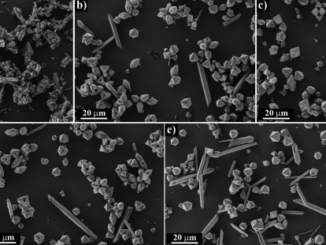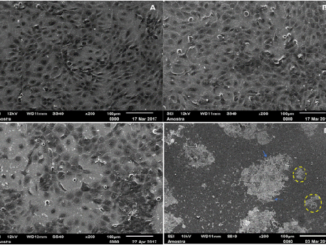
Non-conventional ferromagnetism and high bias magnetoresistance in TiO2-x A simple phenomenological approach
Abstract: A simple phenomenological approach is used to describe magnetization and magnetoresistance in thin films of oxygen-deficient ruffle titanium dioxide (TiO2). Magnetization curves were successfully simulated by considering the ferromagnetic (FM) contribution of magnetically interacting oxygen vacancies (VO’s) forming a single-domain using the Stoner-Wohlfarth (SW) model combined with paramagnetic (PM) contribution of isolated VO’s described by a Langevin function. Whereas approximately half of the VO’s behave as ferromagnetically coupled, rotating coherently with the applied magnetic field, the remaining half of the VO’s tend to align individually with the local magnetic field overcoming the thermal fluctuation deviations. The conduction mechanism is described by variable range hopping (VRH) regime with electron hopping between VO’s centers in the TiO2-x matrix. The magnetoresistance (MR) curves are consistently simulated through the scaling with square of PM contribution of magnetization, indicating that resistance depends on the relative orientation of the magnetic moments associated with non-interacting VO’s dispersed in TiO2 matrix at low temperatures. Density functional theory (DFT) calculations were performed to validate the parametrization of the phenomenological approach used to described the ferromagnetic groundstate of the V-o network and spin polarization in the VRH regime in the TiO2-x matrix. Spin-resolved density of states (DOS) calculations consistently reveal that magnetoresistance can be ascribed to electron hopping from defect-states located immediately below Fermi level to the bottom of conduction band states with an opposed spin-polarization.
Author(s): Paes, VZC ; Mosca, DH; de Oliveira, AJA ; Varalda, J
JOURNAL OF MAGNETISM AND MAGNETIC MATERIALS
Volume: 497 Pages: Published: 1 MAR 2020
DOI: 10.1016/j.jmmm.2019.166068




